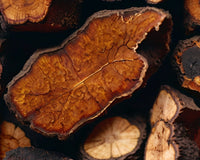After digestion of foods containing carbohydrates become glucose, or blood sugar if you have diabetes, control system of blood sugar is very important. Healthy eating is a key strategy for controlling blood sugar and the time, type and amount of food consumed.
Monitor your blood sugar levels and keep written records to understand how your body responds to specific foods.
Below, you will find tips on managing carbohydrate intake.
meal
- Eat three staple foods a day. Schedule meals based on your blood sugar, activity level, and medications. Establish a diet pattern that suits you.
- Don't skip meals. Try to eat consistent amounts of carbohydrates and consistent portions.
- Eat a variety of foods in each food group to get good nutrition.
drinks
- High-carbohydrate liquids can quickly raise blood sugar levels. Strictly limit fruit juice and ordinary soda.
- Weight loss drinks and other beverages containing artificial sweeteners will not increase your blood sugar levels.
- Juice has a high natural sugar content. 8 ounces of natural fruit juice, without sugar, has the same sugar content as 8 ounces of regular soda, and contains about 6 teaspoons of sugar. Eat fruit instead of drinking juice.
Dairy products
- Milk and yogurt contain a natural sugar called lactose. Choose a healthier non-fat or low-fat version.
- Cheese contains trace carbohydrates, but is high in fat. Choose low-fat cheeses such as 2% fat, low-fat or non-fat cheeses.
fruit
- Fruits are naturally sweet, so you can only eat one serving of fruit at a time. For example, one serving is a small apple or orange; half a large banana; or a cup of diced melon.
- Choose fresh fruit, unsweetened frozen fruit, or canned fruit packaged in water or juice.
- Eat fruit instead of juice.
starch
- Eat foods made from whole grains, which are more nutritious, such as bread, brown rice and wild rice, and grains, including oatmeal, millet, pasta, quinoa, and tortillas.
- Limit highly refined grains with low nutritional value, such as white bread and rice, and processed grains.
- Try to eat the same amount of carbohydrates at each meal. Eating too much at once can cause blood sugar levels to spike.
candy
- Desserts often contain high carbohydrates and high fat. Limit the serving size.
- Sources of liquid sugar include fruit juices, smoothies, sodas, sports drinks, and sweetened coffee and tea. Liquid carbohydrates are quickly absorbed into the blood and can quickly raise blood sugar levels. Small amounts of these drinks can be tolerated when your blood sugar levels are under control and you intend to be active. Monitor your blood sugar to check your glucose tolerance.
Other tips
- Discuss drinking issues with your healthcare provider. Alcohol can interfere with blood sugar control and should be used with caution. Don't drink on an empty stomach.
- If you are overweight, it is recommended to lose weight. Losing weight can help insulin better control blood sugar.
- If you are physically capable, exercise. Doctors recommend at least 30 minutes of moderate exercise every day, which can be divided into two 15-minute courses or three 10-minute courses. If you are currently sedentary, start with 5 to 10 minutes of exercise every day, and then increase your amount of exercise by 5 minutes each week.
- Walking outdoors is a good way to exercise. In inclement weather, look for indoor options, such as walking in the mall, using exercise DVDs, or working out in the gym.





